12th September 2023
If you’ve already met the five fantastic creatures featured in our “Ugly” Endangered Animals campaign, you’ll already know how passionate we are about saving all sorts of vulnerable creatures.
However, there are so many species around the world who need to be rescued from the jaws of extinction. We’re about to introduce you to 10 incredible but endangered animals, and some of the charities dedicated to saving them…
Brace yourself, it’s about to get interesting!
Andaman Horseshoe Bat – Endangered
Andaman horseshoe bats are from the Andaman Islands of India.
These unusual-looking creatures, who have large ears and a leaf-like nose, are endangered due to the illegal collection of nests belonging to edible-nest swiftlets, which damages Andaman horseshoe bat habitats.
The Bat Conservation Trust promotes the protection of bats and their habitats through biodiversity advocacy work in the UK and beyond.
Fun fact: Andaman horseshoe bats were first discovered in 1892 by an Italian zoologist!
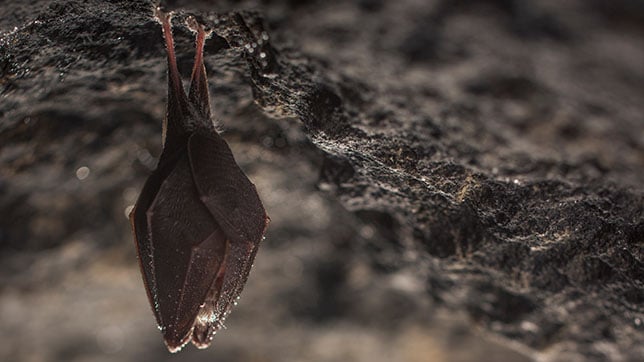
Black-and-white Ruffed Lemur – Critically Endangered
The fluffy, bright-eyed, black-and-white ruffed lemur is found in Madagascan rainforests. Sadly, this lovely lemur is now critically endangered. Their biggest threats are habitat destruction and being hunted for meat.
Credit: Wild Planet Trust.
Durrell Wildlife Conservation Trust is working alongside community partners in Madagascar to save lemur habitats by protecting forests.
Fun fact: Black-and-white ruffed lemurs are great at spreading pollen!
Chinese Giant Salamander – Critically Endangered
Chinese Giant Salamanders are threatened by over-exploitation, disease, and habitat loss, disappearing from wild rivers due to their demand as a delicacy.
The Zoological Society of London (ZSL) is actively involved in the conservation of Chinese giant salamanders. One of the many ways ZSL is helping the giant salamander is by working with their partners to complete the largest ever wildlife survey in Chinese history.
Fun fact: Chinese giant salamanders are the world’s largest amphibians!
Ganges River Dolphin – Endangered
Ganges River dolphins may not be the first dolphin species that springs to mind, but these friendly-faced freshwater mammals are at risk of extinction.
River dolphins don’t have as much space as dolphins who live in oceans, and because they live near heavily populated areas, they’re in constant competition with humans for resources.
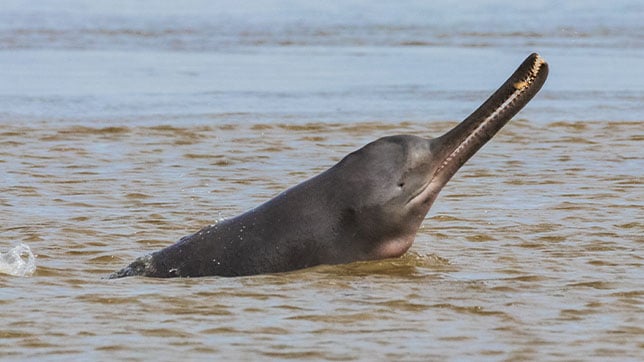
Whale and Dolphin Conservation partners with conservationists to work on projects that fight for the future of all river dolphins.
Fun fact: Ganges River dolphins can weigh up to 150kg (about the size of an upright piano)!
Galápagos Sea Lion – Endangered
With their puppy-like expression and big, beautiful eyes, it’s difficult not to fall in love with the Galápagos sea lion!
Credit: BBC
Unfortunately, the Galápagos sea lion is endangered due to the impact of climate change on their prey (as fish populations decrease), and because they accidentally get caught in fishing nets. Additionally, when sea lions rest on fishing boats, it can cause those boats to sink – fishermen use barbed wire to keep them away, which causes sea lions to get injured.
The World Wildlife Fund (WWF) supported a project on San Cristóbal Island to create two floating bases and a ‘primary care nursery’ for sea lions to rest on instead; thankfully, sea lions are now using those bases more often.
Fun fact: Galápagos sea lions can stay underwater for over 10 minutes!
Green Turtle – Endangered
These graceful turtles are threatened by hunting, the harvesting of their eggs, the loss of nesting sites, and by being caught accidentally in fishing equipment. In some countries, green turtles are still killed for use in medicine and traditional ceremonies as well.
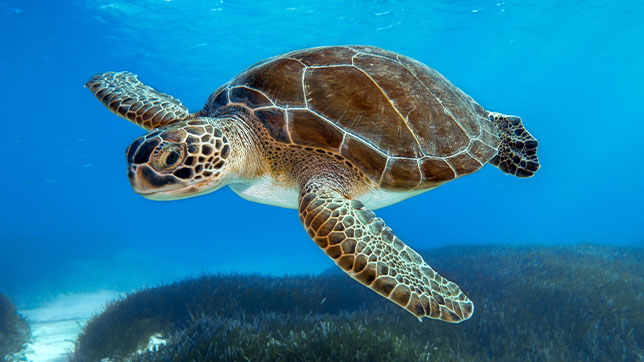
Green turtles are important because they graze on seagrasses and algae, which keeps the sea’s ecosystems healthy.
Wildlife Vets International have their own Turtle Team, who help to save green turtles in collaboration with partners like ARCHELON.
Fun fact: Green turtles are the only herbivores of all sea turtle species!
Grey-headed Albatross – Endangered
Since 1977, numbers of the grey-headed albatross have declined by more than half due to these birds becoming bycatch. Climate change is also having a negative impact on the grey-headed albatross, due to food shortages and extreme weather.
The RSPB is working, with several different partners, on projects to combat albatross bycatch by monitoring fishing activities and engaging with companies to support seabird protection regulations.
Fun fact: Grey-headed albatrosses can live for an average of 35 years!
Nubian Giraffe – Critically Endangered
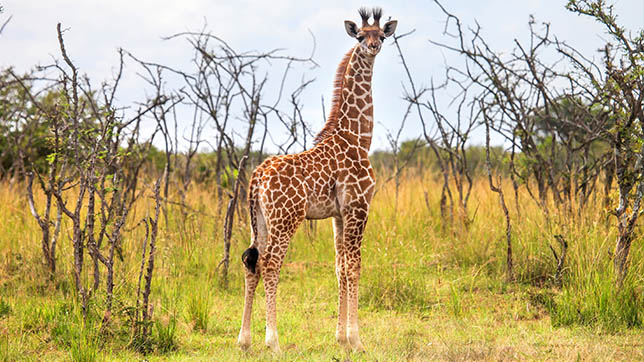
Despite their gorgeous coat markings and cheerful expression, the Nubian giraffe is just a step away from becoming extinct in the wild. There are around 2,600 individual Nubian giraffes left in the wild, which is down to habitat loss, poaching, and human-wildlife conflict.
In partnership with the Giraffe Conservation Foundation (GCF), Edinburgh Zoo is supporting conservation monitoring efforts and helping GCF develop a better understanding of giraffe reintroduction programmes.
Fun fact: Nubian giraffe coat patterns are as unique as human fingerprints!
Okapi – Endangered
You’d be forgiven for thinking the okapi was a type of zebra, with their large ears and striped hindquarters, but they’re actually a member of the giraffe family!
Sadly, the outstanding okapi is endangered due to habitat loss and poaching.
Luckily, there are organisations across the world who are working hard to save the okapi. For example, the Tusk Trust provides support to local conservation projects in the Democratic Republic of Congo through their Okapi Conservation Project.
Fun fact: The okapi wasn’t discovered until the 20th century!
Wild Camel – Critically Endangered
Although camels are usually thought of as desert-dwelling animals who live in hot environments, the wild camel lives in remote locations within China and Mongolia – where they have adapted to cope in colder conditions.
According to the International Union for Conservation of Nature (IUCN), there are only around 950 of these camels left in the wild and they’re at risk of extinction due to being extensively hunted for their meat.
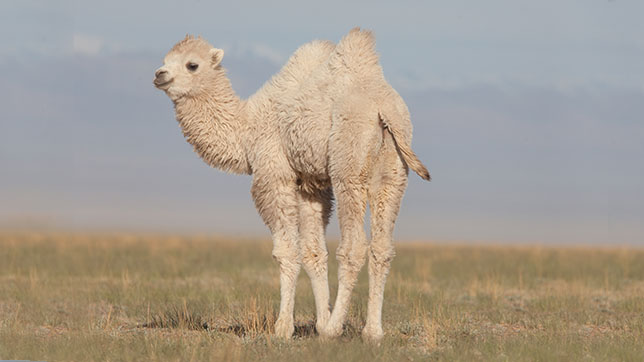
Wild Camel Protection Foundation raises funds to support vital work that protects wild camel habitats and the fragile ecosystems of north-west China and south-west Mongolia.
Fun fact: They can stay hydrated by drinking salt water!
So, as we can see, saving one species can help save a whole ecosystem.
Here at Animal Friends, protecting your pet is our purpose and animal welfare is our passion. We’re proud to help every, unique animal. Why not get involved, and save animals with us?
Animal welfare blog
If you found this blog useful, why not visit our animal welfare blog to find more articles about animal at risk around the world?
From news and facts, to charities helping protect animals and the great work they do - find out more about animal welfare and those making a difference.
